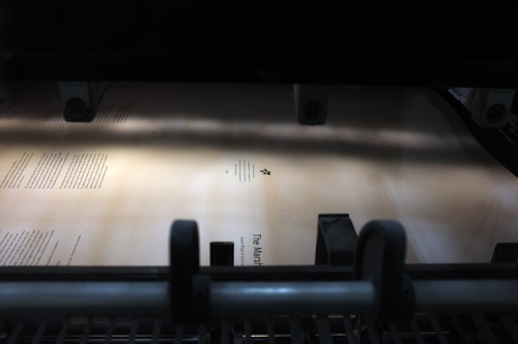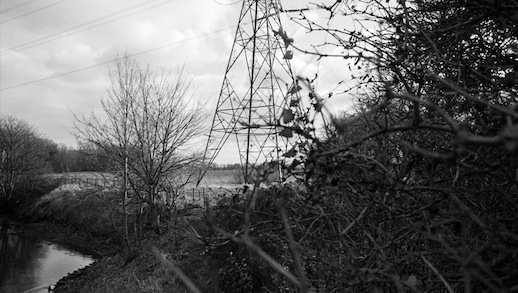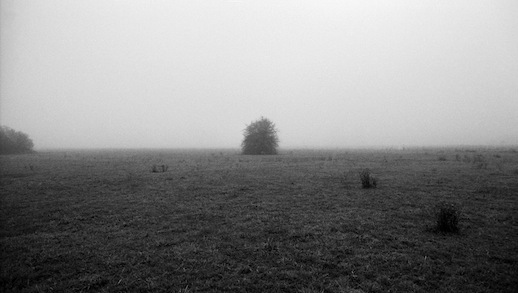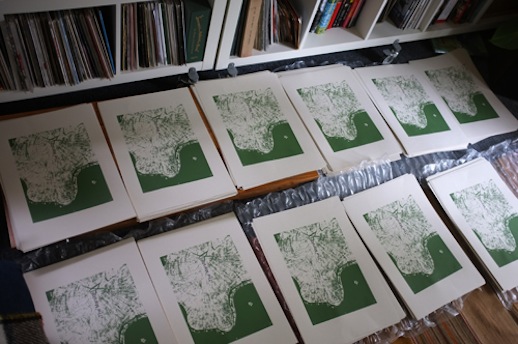Words and pictures by Josh Lustig.
The Hackney, Walthamstow and Leyton marshes are one of those special parts of London. A place where nature and the city knock heads, forming a vital and well-used open space in what is a densely populated part of the city. Horses and grey herons cross paths with tatty pigeons and Staffordshire bull terriers; you can go horse riding and ice-skating, play football and fish. You can get lost in the marshes, but unlike on Hampstead Heath, where it is possible for a moment to believe that you are out of London, on the Marshes the dissecting train lines and electricity pylons don’t let you forget.
It’s this apparent contradiction that keeps me enthralled. Ever since moving to the area five years ago, I have wandered around the paths, through the nature reserves and across the football pitches and the River Lea, under and over decrepit bridges, down into sunken filter beds and then up onto open marshland.
There is something in the old, dilapidated industrial feel of the area – little of which still remains – that I find fascinating. The Lea, and its canals, once formed a vital supply line for the Capital; delivering tons of small factory products, such as pins and needles, matchsticks and children’s toys to a rapidly growing Victorian city. The great cholera outbreak of 1832 killed over 30,000 people in East London alone and led to the establishment of filter beds in the Marshes to clean the water from the River Lea. A great concrete turning circle and the remnants of train lines still cut through the area where the filter beds once stood.
In the winter of 2011, I decided to try to capture how I was feeling. It was a long winter. The combination of my old Canon FTb and a load of FP4, and the subtle brooding nature of the Marshes, seemed to be a perfect fit with my state of mind. As I began printing these first grey, misty, unpopulated images, short narratives began to form. I began sequencing images, still devoid of any real narrative. It was then that I got in touch with my friend Sammy. I knew he shared my sense for the melancholic, and I thought, with any luck, he might want to join my Marshes project. I sent him a couple of sequences of images and he sent me back a couple of stories. And so it began. Over the next six months pictures and stories would flow between us. Sometimes Sammy would write, then I would shoot; sometimes I would shoot then Sammy would write.
The idea of a collection of unrelated stories, whose only link was the physical space of the Marshes, began to take hold. Sammy and I sat together going over ideas. Unbound pages à la BS Johnson, or the work of Richard Long. Thankfully a lot of our more fantastical ideas were reined in through the skill of Daisy Lumley, a good friend, and the designer for the Marshes book. Initial concepts of great sprawling concertinas and elaborately printed postcards were replaced with a more elegant and balanced design. We did manage to keep hold of a single page of letterpress type – a deliberate nod to the industrial processes of the area. The letterpress page was printed in Stepney, East London; the rest of the book in Bermondsey, just south of the Thames. Together with the hand screen-printed covers – printed by Tartaruga’s Max Bondi – and the hand-sewn binding, the book is intended to have a distinctly hand-made feel. The tactile nature of a book is very important. The paper, ink, stitching are all what make a book stand out from any other form of presentation. It needs to be held, to have its pages turned. There is an intimacy to the book that could not be replicated online or in a gallery. That’s why we made it the way we did. It could not exist in any other form.
On The Marshes was first published on the Tartaruga blog.
The Marshes is on sale in the Caught by the River shop, priced £22. It’s really good.



